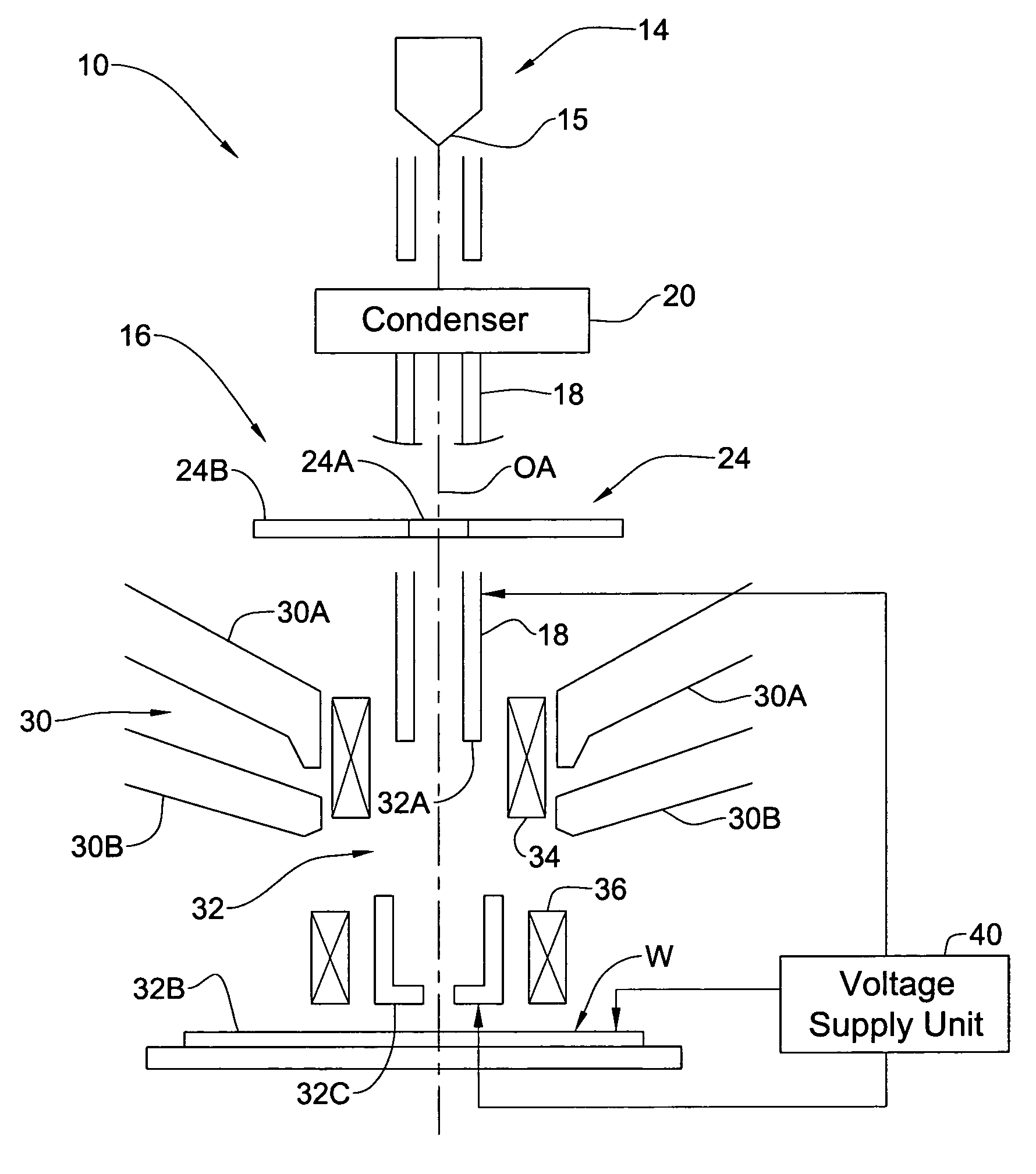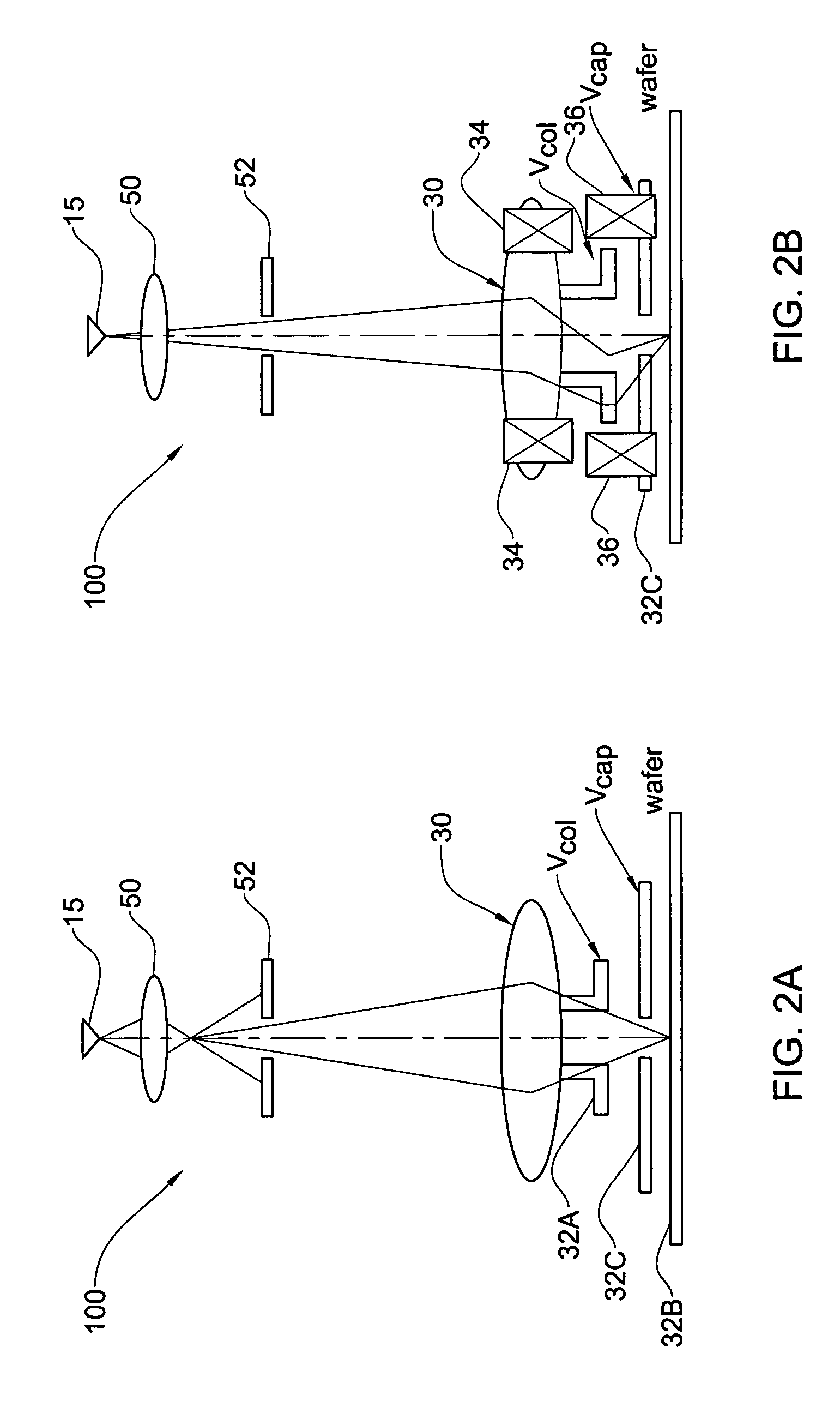Charged particle beam column and method of its operation
a charge particle and beam column technology, applied in the direction of instruments, heat measurement, machines/engines, etc., can solve the problems of locating defects (foreign particles) on patterned surfaces, and achieve the effect of improving the image resolution of the column, and increasing the effective voltage of the column
- Summary
- Abstract
- Description
- Claims
- Application Information
AI Technical Summary
Benefits of technology
Problems solved by technology
Method used
Image
Examples
Embodiment Construction
[0034] Referring to FIG. 1, there is schematically illustrated a SEM system 10 for inspecting / measuring a wafer W. The SEM system 10 typically comprises an electron beam source 14 (a so-called “electron gun”) having a small tip (cathode) 15; a charged particle beam column 16; and a secondary electrons' detector 24 The charged particle beam column 16 includes an anode tube 18 that defines a primary beam drift space; a condenser lens arrangement 20; and a focusing arrangement 22. The longitudinal axis of the anode tube 18 defines an axis OA of the primary beam propagation towards the focusing arrangement 22.
[0035] In the present example, the detector 24 is the so-called “in-column detector”, designed like a plate having an opening 24A surrounded by detecting regions 24B. The detector 24 is located such that the longitudinal axis of the anode tube 18 passes the opening 24A, which thus serves as a primary beam hole.
[0036] The column 16 also typically comprises beam blank means, severa...
PUM
 Login to View More
Login to View More Abstract
Description
Claims
Application Information
 Login to View More
Login to View More - R&D
- Intellectual Property
- Life Sciences
- Materials
- Tech Scout
- Unparalleled Data Quality
- Higher Quality Content
- 60% Fewer Hallucinations
Browse by: Latest US Patents, China's latest patents, Technical Efficacy Thesaurus, Application Domain, Technology Topic, Popular Technical Reports.
© 2025 PatSnap. All rights reserved.Legal|Privacy policy|Modern Slavery Act Transparency Statement|Sitemap|About US| Contact US: help@patsnap.com



